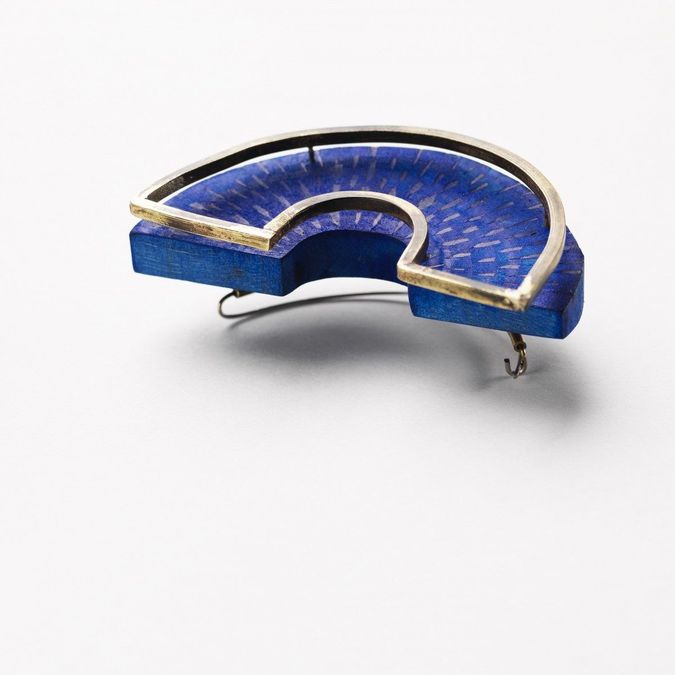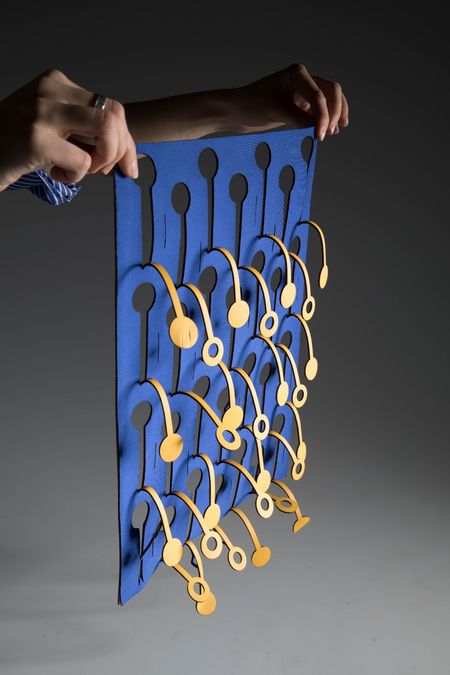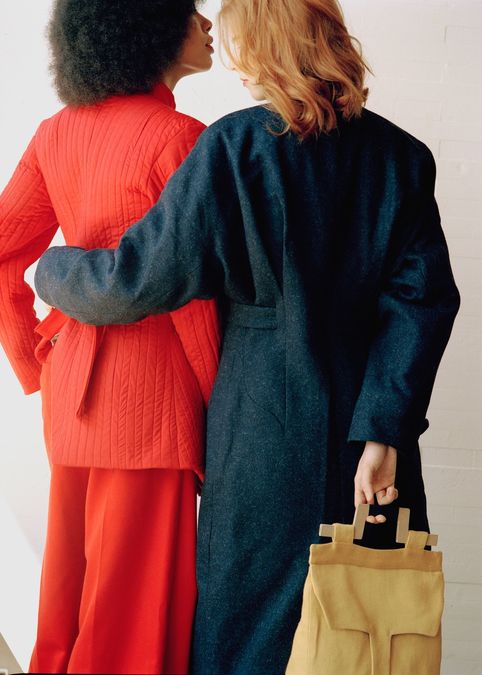Local Heroes: Materialise at Fife Contemporary
This month Fife Contemporary launch their first dedicated online exhibition microsite. Materialise 2019 is where work by exceptional craft and design graduates from last year’s Scottish degree shows has been selected for presentation
The idea behind the Materialise portal is to provide a platform for these emerging designers in a highly accessible format. “We re-evaluated what the craft sector in Scotland is doing in terms of maker support and it emerged that what was needed was an alternative platform for makers, allowing international and local audiences to appreciate craft – especially the crossover between art, design and craft,” says curator Stefanie Cheong.
“This is especially true for recent graduates who often experience a ‘drop-off’ after graduating. We want to help them sustain a career in craft. These makers were also put forward for a Cove Park residency to help them see practical ways to retain the integrity of their conceptual ideas.”
Materialise is conceived of as a ‘virtual venue’ that’s specifically for exhibitions. Fife is spread out geographically with wide distances between partner venues so an online format prevents the organisers from being limited in terms of their ambitions to exhibit innovative practice. Instead, they are able to present widely the outcomes of nine designers who have spent the last year working towards a collection of work, researching areas of interest, exploring the possibilities of materials, and finding their voice as makers.
Caitlin Hegney is based between her studio in Argyll and Bute and The Glasgow School of Art’s Silversmithing and Jewellery Department in her role as Artist In Residence. Hegney forges her own tools and describes how for her, this makes chasing metal the equivalent of drawing. Her work explores material value and is underpinned by research into the rich and contradictory history of the colour blue. “The lapis lazuli stone, for a period was more expensive than gold as it was the raw material used to make ultramarine paint." This work simultaneously references but also subverts ancient aesthetics and traditional processes, employing techniques that carry rhythms throughout a varied material palette.
Georgina Hickey is designer in residence in the printed textiles department of DJCAD. She is passionate about slow, hand processes, explaining that these fulfil her as a craftsperson and demand careful consideration and investment from her customers. “People are more likely to cherish and repair handcrafted products, rather than add to the growing issues of our throwaway culture and fast fashion. I believe in the importance of well decorated environments in terms of personal wellbeing and happiness. My mission is to create bold, timeless interior accessories from my hand-printed textiles for people to value in their homes.”
Morag Seaton graduated from Garment Design, Construction and Illustration at Glasgow School of Art. She has produced a set of books, illustrations and a collection titled Memories of Dress which draws from stories of garment use – a series of illustrated interviews about people’s most valued clothes. For Seaton, talking to people about their clothes and “communicating the ways in which we use garments, are just small ways in bringing value to our things. Each piece of the collection has been developed from these stories and takes the key elements of comfort, security, identity and childhood memory together to create functional accessories.”
Laura Ukstina’s design journey has taken her from “Memphis to Lego.” The Fife-based textile designer is a graduate of Gray’s School Of Art and uses laser-cutting to create unique patterns from neoprene, faux leathers, suede and plywood. The colours, shapes and structures of Lego have been an inspiration for her collection of multimedia fabrications which explore knit, vinyl and paper constructed textiles. “Lego’s system of colourful, interlocking, plastic blocks has inspired my collection of interchangeable and modular shapes where each garment can be customised to personal specifications. I wanted to create something that can be manipulated by the consumer to make the product last longer and reduce fashion and textile industry waste.”
Jewellery designer and silversmith Kathryn Reid is a recent graduate of ECA and is inspired by the natural beauty of coastal Northern Ireland where she was born. She has captured the daily narrative of her parents' home farm in County Antrim in the form of medals, tools and jewellery. In her medals Reid uses brass, silver, resin and crushed eggshell finished with gold plating, oxidation and patination. “I created a ‘bucket of cow meal’ where the cow meal was made out of dyed polymorph plastic and stamped using my steel punching tools. For each of my medals I have fashioned the material carefully to ensure the narrative behind the piece is clearly embodied. Through my designs I aim for the audience to experience the challenging and rewarding nature of my Dad’s job."
Catherine Sinclair is the founder of Cove Design. Two years ago she moved from Edinburgh to the far north west coast of Scotland. “We sold our home and bought the side of a hill, with an edge of coastline and an inlet, or cove. Living on the side of a sea loch surrounded by the most dramatic scenery has inspired me to work in a bolder, more instinctive manner. Moving to the remote Highlands has meant that the natural forms, textures and colours that surround my life now inform what I find inspiring.” Her collection of knitted textiles is called Building Shelter and grew from a desire to experiment with materials and technology to create fabrics with a sense of fluidity and surprise. "Deliberately restricting the materials used to lambswool and elastic enabled me to be more courageous with colour proportions and experimental with technology.”
From rural North Yorkshire is Costume and set designer Liberty Bramall who graduated with a degree in Performance Costume from ECA. She has developed a methodology that uses detailed clothing designs to explain complex stories and produces clothing that has multiple functions, such as a hat that becomes a lampshade and skirts that detach to become soft furnishings. “When producing clothing for the characters in my performances I adorn their costumes with images or textures that I design after extensive research into their experiences or into their role in a script. Ultimately, my final pieces are often garments where every inch of fabric has been treated as a canvas for storytelling. The many layers and sections of the costumes I make give a series of clues into the character’s life prior to and even during their role in the performance."
A fellow graduate of ECA is Orla Stevens, a textile designer whose work is influenced by the Scottish landscape and the cultural traditions tied to rural locations. First hand research is integral to her practice “having a genuine connection to the people, stories and an immersion in the places that inspire me helps ground my making in something that I aim to be visually enjoyable, culturally relevant and hold a level of conceptual substance. I love sharing ideas with other people; collaborative practice, especially in the research stages of a project help to broaden ways of thinking, and see new connections between gathered research and making stages.”
Zoe Hutchison says that when people think of the beach they think of romantic walks and beautiful scenery, however, the reality is that “the ocean and its seaside are suffering from pollution and destruction.” As a designer and maker, she is deeply concerned about the environmental impacts that we have on the planet and by working with found objects from the beach the jeweller sees first-hand how we affect the environment at a local level. A graduate of DJCAD, she uses silver, copper, yarn, natural found objects and 3D printed plastic using processes that produce “as little waste as possible” to create desirable, wearable and non-wearable jewellery.


